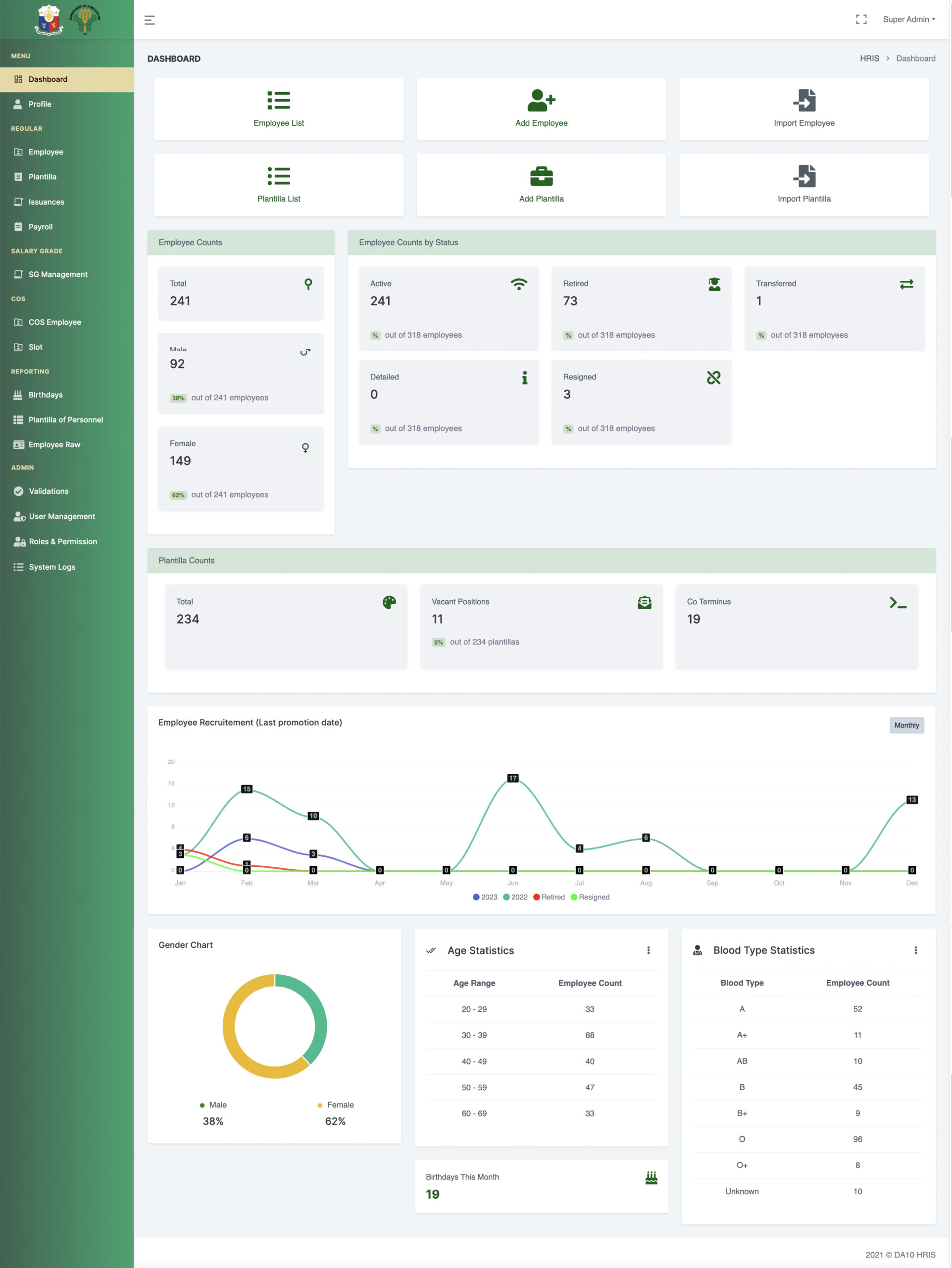Human Resource Information System

A Human Resources Information System (HRIS) is the most used software in HR.
What is an HRIS?
HRIS stands for Human Assets Data Framework. The HRIS could be a framework that’s utilized to gather and store data on an organization’s workers.
In most cases, an HRIS encompasses the fundamental functionalities required for end-to-end Human Assets Administration (HRM). It could be a system for enrollment, execution administration, learning & improvement, and more.
An HRIS is additionally known as HRIS computer program. This can be a bit befuddling because it infers that distinctive frameworks can have distinctive computer program running on them. In any case, this is often not the case. The HRIS is, in substance, an HR program bundle.
The HRIS can either run on the company’s possess specialized foundation, or, more common these days, be cloud-based. This implies that the HR program is running exterior of the company’s premises, making it much less demanding to upgrade.
Other commonly utilized names are HRIS framework and HRMS, or Human Assets Administration framework. These are all distinctive words for the same thing. Collectively, these frameworks are moreover called Human Capital Administration frameworks, or HCM. In this article, we are going utilize the terms HRIS and HRIS frameworks traded.
HRIS Functions
There are diverse sorts of HRIS frameworks and computer program. Since an HRIS envelops all the functionalities for HR, all partitioned functionalities are portion of the framework. These functionalities incorporate:
- Payroll. Payroll robotizes the pay prepare of workers. Legally binding information and data on modern contracts is frequently entered into this framework – now and then combined with time & participation information – and at the conclusion of the month, installments orders are made.
- Benefits administration. Another usefulness of the HRIS is benefits administration. Worker benefits are an imperative perspective of emolument and are moreover overseen in this framework. More progressed frameworks offer an worker self-service show for worker benefits. In this case, representatives can select the benefits they are trying to find themselves. One may need more paternity take off, the other one a more expensive company car. This self-service approach to benefits is additionally called a cafeteria show.
- Time & Attendance. This module accumulates time and participation information from workers. These are particularly important for move laborers where workers clock in and out. Back within the day, representatives regularly composed down their working hours on a bit of paper. At that point, the supervisor would physically enter the information into a time following framework. Based on this information, installment orders were created and paid to all representatives. These days, laborers often check into work by unique finger impression or a card that’s synced with an HRIS. This gives an correct time for entry and takeoff. Any issues with delay are effortlessly identified.
- Reporting & Analytics. A much rarer module in HRIS frameworks is announcing and analytics. Cutting edge frameworks empower the creation of mechanized HR reports on different points like representative turnover, nonappearance, execution, and more. Analytics includes the investigation of these experiences for better-informed choice making. We’ll clarify more around this within the area underneath.

